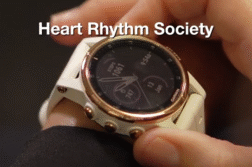SALT LAKE CITY, Utah. (Ivanhoe Newswire)— More than six million Americans are suffering from heart failure right now. It happens when the heart can’t pump enough blood and oxygen to other parts of the body. It’s a serious condition. In fact, almost 400,000 will die from heart failure this year. But now doctors may be able to heal hearts that are dying.
Anne Binger is riding high— enjoying every single minute she can. Just a few years ago, she could barely get out of bed. She was 40 and diagnosed with heart failure. Doctors put in a left ventricular assist device.
“LVAD which is a fancy word to describe a cardiac assist device,” explained Stavros George Drakos, MD, PhD at the University of Utah Health.
The only way Anne would get off the LVAD was to receive a heart transplant. But Dr. Drakos gave Anne another option: let her heart rest, build it back up with medications, and then get it beating on its own.
“So, what do you think about trying this? And I said, ‘what are my main risks?’ and he said, ‘spontaneous death.’ I said, ‘great. I’m living with spontaneous death moment to moment for the last year. So, let’s go for it,’” recalled Anne Binger.
Anne became one of the first patients to get her LVAD removed.
“The LVAD takes over and removes the stress and the load from the heart, which is weak,” illustrated Dr. Drakos.
“I was beating on my own,” Binger exclaimed.
“People initially, consider these like coming back from the dead, like Lazarus, like a miracle, and miracles, as we know, don’t happen every day,” elaborated Dr. Drakos.
Anne returned home, relying on her own heart and a case full of medications.
“Just last week, I got the go-ahead to try to take one medication away and it feels like Christmas,” Binger shared.
The ideal candidate is younger, whose heart is weak but not very enlarged. Because this is such a new procedure, doctors are not sure how long the revived heart will last and if another LVAD will be needed later. Dr. Drakos hopes that what they learn by this investigational study will help them revive failing hearts with medication, without the patient being put on an LVAD device.
Contributors to this news report include: Cyndy McGrath, Executive Producer; Marsha Lewis, Field Producer; Rusty Reed, Videographer; Roque Correa, Editor.
To receive a free weekly e-mail on Medical Breakthroughs from Ivanhoe, sign up at: http://www.ivanhoe.com/ftk
Sources:
https://www.cdc.gov/heartdisease/heart_failure.htm
MEDICAL BREAKTHROUGHS
RESEARCH SUMMARY
TOPIC: CUTTING-EDGE PROCEDURE HEALS DYING HEARTS
REPORT: MB #4851
BACKGROUND: Heart failure is a term used to describe a heart that cannot keep up with its workload and where the body may not get the oxygen it needs. Congestive heart failure is a type of heart failure, although sometimes the two terms are used interchangeably. The body depends on the heart’s pumping action to deliver oxygen and nutrient-rich blood to the cells. When the cells are nourished properly, the body can function normally. With heart failure, the weakened heart can’t supply the cells with enough blood which results in fatigue and shortness of breath. Some people even have coughing. Activities such as walking, climbing stairs, or carrying groceries can become very difficult.
(Source: https://www.heart.org/en/health-topics/heart-failure/what-is-heart-failure)
A BRIDGE TO REMOVAL: Left ventricular assist devices (LVADs) are used to assist the advanced heart failure patient as a bridge to a transplant or as a permanent therapy. Current continuous flow LVADs have become routine therapy for patients with end-stage heart failure, helping to improve quality of life and enhancing survival. There has been a small group of patients where their heart function has improved to the point where the LVAD can be removed. This is referred to as a bridge to recovery. The Texas Heart Institute group has championed a strategy based on normalization of the cardiac cycle to guide eligibility for pump removal. Once hearts are adequately unloaded, patients are evaluated at minimal pump speeds for normalization of aortic valve opening time. With this reconditioning approach, they have removed pumps from over 30 patients.
(Source: https://www.ncbi.nlm.nih.gov/pmc/articles/PMC4283551/)
FDA APPROVES NEW TREATMENT: The FDA approved Farxiga (dapagliflozin) oral tablets for adults with heart failure with reduced ejection fraction. Farxiga’s safety and effectiveness was evaluated in a randomized, double-blind, placebo-controlled study of 4,744 participants. The average age of participants was 66 years, and more participants were male (77%) than female. “Heart failure is a serious health condition that contributes to one in eight deaths in the U.S. and impacts nearly 6.5 million Americans,” said Norman Stockbridge, MD, PhD, director of the Division of Cardiology and Nephrology in the FDA’s Center for Drug Evaluation and Research. Participants were randomly assigned to receive a once-daily dose of either 10 milligrams of Farxiga or a placebo. After about 18 months, people who received Farxiga had fewer cardiovascular deaths, hospitalizations for heart failure, and urgent heart failure visits than those receiving the placebo.
FOR MORE INFORMATION ON THIS REPORT, PLEASE CONTACT:
JULIE KIEFER
If this story or any other Ivanhoe story has impacted your life or prompted you or someone you know to seek or change treatments, please let us know by contacting Marjorie Bekaert Thomas at mthomas@ivanhoe.com




